Don’t forget, there are still several days to enter our DVD giveaway – we’re giving away two copies of our recent Machine Gun Manuals DVD (worth forty bucks each!) – and you can get one!. To have your chance at winning, just post a mention of the giveaway and a link to the DVD page (https://www.forgottenweapons.com/firearms-manual-archive-volume-i-machine-guns/) to your blog or Facebook page – then drop us an email (admin@forgottenweapons.com) and let us know that you’ve done it (and a link to your blog, if applicable). Pretty easy, right? I’ll be picking two winners at random on Tuesday (the 9th) and sending out some free DVDs!
Back to our regularly scheduled blog…
We like finding English-language information on foreign military arms, and we ran across a particularly interesting example of just that recently. The British government printed booklets during WWII describing enemy arms for the education of its soldiers – and they give us good insight into what was being used in the field. Well, this particular one is specifically about some less-common weapons used by the Wehrmacht (click to download the whole PDF):
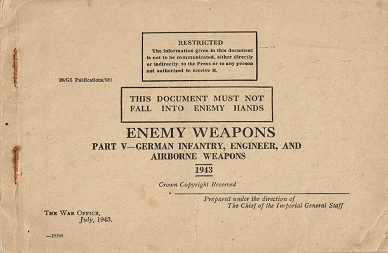
It covers the MP18/I, MP28/II, MP34 (both Bergmann and Steyr varieties), MG34S, MG34/41, MG42 (which was new at the time of printing) rifle grenade launchers, 8, 10, and 20cm mortars, and the airborne 75mm recoilless rifle:
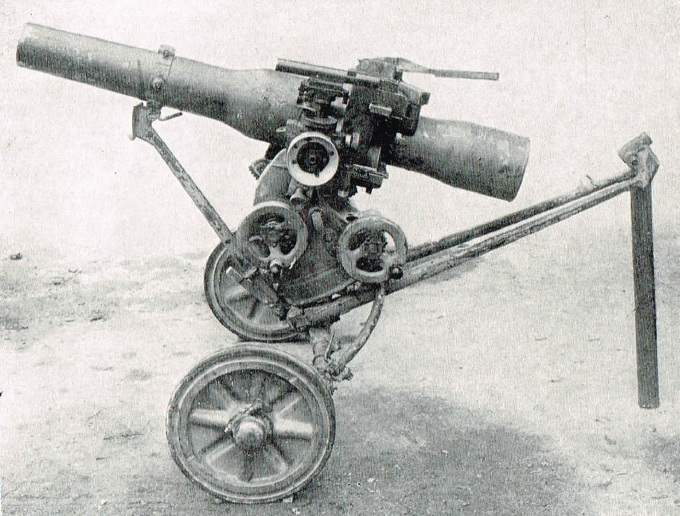
Actually, it has more information on the LG40 than anything else – lots of detailed and disassembled pictures. If you have any interest in this sort of thing, definitely download the PDF and have a look.
Also, I’m sure we’ve all heard at one time or another the old myth that Russia (or someone) adopted the 7,62×39 because it would let them use NATO ammo but NATO couldn’t use theirs? Total bunk…but occasionally there is a case for ammo interchangeability. Appendix A of this booklet has a neat chart showing which countries’ mortar ammo is compatible with which mortars:
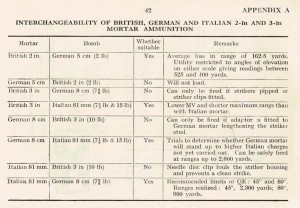
I can’t say I’d ever thought about it much, but it would be good info to have out in the field.
And one last picture of a neat weapon for good measure – the German 20cm (that’s just under 8 inch) spigot mortar:
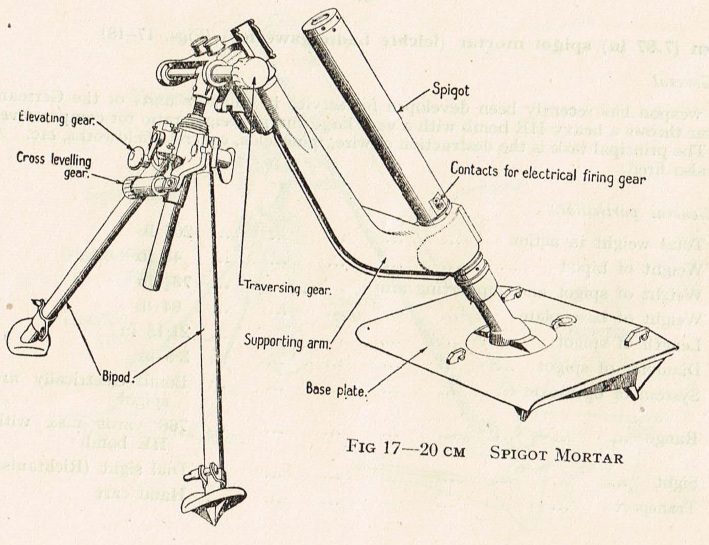

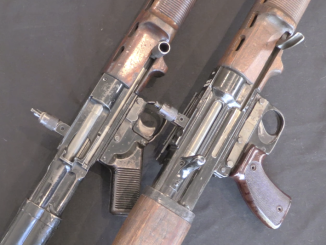
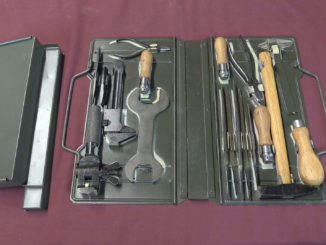
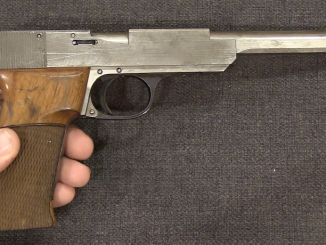
Interesting. No mention of MP38 or 40? The British certainly were aware of these weapons in 1943. May have taken time for information to percolate through technical intelligence channels.
All the frontline units of the USSR had gone to 5.45 before it was reflected in US intelligence materials (even on the high side). Jane’s Defence Weekly had the AK-74 in detail before US Army technical intel did.
I have a 1950s manual on Soviet forces that notes the presence of a “modified panzerfaust AT weapon.” No photos of the nascent RPG-2. It’s also silent on the AK. It was classified “Restricted — security information,” a now defunct classification that was below Confidential, so it’s possible that these weapons were known at a higher level of classification. Maybe not, though — small arms are not an intelligence collection priority.
Back to the case at hand, the spigot mortar is interesting. I always thought this was a WWI trench weapon. I wonder if that was part of the impetus to the British PIAT, one of what I think of as the class of “suicidal infantry anti tank weapons” ranging from the Gammon grenade to the M47 Dragon ATGM.
I don’t have them on hand to check, but I’m pretty sure that the MP38 and MP40 would have been covered in one of the earlier booklets printed on German arms.
The NATO interchangeably myth was about the 5.45×39 and the 5.56mm, not the 7.62×39.
I’ve heard several guys over the years tell me AK ammo could be fired in 7.62mm NATO weapons. They’re obviously wrong.
It’s just a broad coincidence that the USA settled on 3/10 of an inch, and the Russian Empire settled on 3 “lines” (an obsolete unit of measure from he same system as the “arshins” that the sight of the 1891 was calibrated in. And of course, there’s a difference of three thousandths in the bullet diameter!
We did train (in the old SF heavy weapons course) to employ various combinations of US and foreign mortars. We also have in the field used mixed artillery. FDC gets interesting because there’s a different number of mils in the circle 6000 vs 6400.
In Vietnam, US forces were directed not to use captured ammo (contrary to the chart, you CAN fire 82mm in our 81, but)… because of the ongoing Pole Bean / Italian Green program to sabotage NVA weapons and ammo caches. This usually involved replacing the primer with something hotter and the propellant with C4 or Comp B. Feller could lose his head touching off a round like that.
The Germans did something similar in WWII. It’s recounted in one of my old issues of Waffen Revue. (A very good but sadly defunct German arms magazine, best at deep archive dives).
If you want to grab a copy of Part II, mainly Italian weapons (plus a pile of other manuals) it’s on this site “http://www.lexpev.nl/”. Click on the link for manuals at the top.